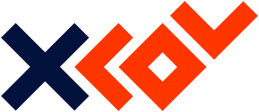By Adolfo Estalella & Tomás Sánchez Criado
xcol Inventory curates very different types of ethnographic inventions. Formally it is organized in four main sections: (1) the proper inventory, which assembles a collection of inventions of four different kinds. Besides ‘the inventory inside the inventory’, there are three more sections: (2) Xpositions, (3) Inquiries, and (4) Glossary. Each of them collects different kinds of items.
Inventions in the inventory section are organized in four typologies, each typology collect a particular type of invention:
- (i) field devices are fieldwork inventions that are used and designed in the empirical situation of ethnographic inquiry,
- (ii) open formats are pedagogical methodologies and venues for the apprenticeship of ethnography,
- (iii) intraventions are interventions towards the inside of the discipline of anthropology that draw inspiration from ethnographic investigations,
- (iv) prototypes are social and material experiments in anthropological practice at the hinges of the ethnographic.
Outsidee of the inventory section three more sections may be found in the xcol-Inventory:
- Xpositions is the section that keeps pieces introducing the conceptual positions, as well as expositions, that sustain the xcol anthropological program.
- Glossary offers a vocabulary accounting for the ethnographic invention.
- Inquiries are collections assembling different elements of the inventory (inventions, expositions and conceptual terms) presenting explorations into relevant topics.
There are different ways to use the xcol Inventory: you can navigate, read, and use it; you can contribute to inventory ethnography; you can use the inventory as a pedagogical resource for ethnographic learning; and you can even create your own inventory with the xcol source-code, called INVOX.
Using
xcol is an inventory ready to use. All of its contents might be freely used and shared. Created to promote ethnographic invention, the ideas, concepts and contents here present have been published with a Creative Commons BY SA license that allows you to freely use, adapt and share the material for any purpose, even commercially under the terms of the license that imply that you have to share alike. You may use the contents in any reasonable manner, but not in any way that suggests the licensor endorses you or your use.
Inventorying
Not only the content of the xcol inventory may be used, since it is an open platform for collaborative inventorying anyone may contribute to the repository with novel inventions. xcol inventory thus invites xcolars (at all levels and from different backgrounds) interested in documenting and sharing the inventiveness of their modes of inquiry to join and contribute to the endeavour of inventoring together.
Learning
xcol seeks to promote the invention integral to any ethnographic inquiry. Hence, one of its central goals is to serve as a pedagogical resource for those learning to practice ethnography (at any stage of their career). The platform thus wishes to serve as a collective tool for apprenticeship. We thus suggest not only to use its contents but organise local or online inventathons: meetings whereby to collaboratively inventory ethnographic modes of inquiries. If needing help in developing ideas for one, do not hesitate to contact the xcol team.
Forking
xcol is called ‘An’ ethnographic inventory instead of ‘The’ ethnographic inventory because we envisage the possibility of many other inventories, with different epistemic sensibilities, thematic interests, geographical locations and disciplinary orientations. The source code of xcol inventory, called INVOX (Inventory Open Source Software) has been published under a free software GNU GPL v3.0 license. You are free to copy and fork the code for any other purpose. It has been developed by Montera34 studio.
